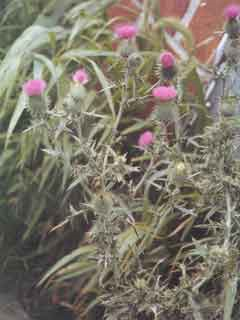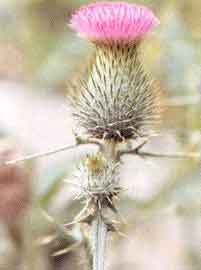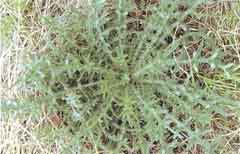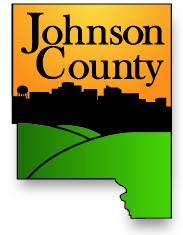(Cirsium vulgare)
Description: Bull thistle is a biennial reproducing by seeds. The taproot is fleshy. The stem is stout, erect, branching, hairy, and leafy. The flowering stalks attain a height of 3 to 6 feet. The leaves extend down the stem in spiny wings. The first year rosette has green leaves which are slightly indented, lance-shaped, and are wooly and grayish on the underside. The second year leaves are coarsely lobed, short and broad. Each triangular lance-shaped lobe has 3 or 4 points, which end in a sharp, long, stout, yellow spine. Numerous shorter spines are between the point spines. The upper surface of the leaf has short, stiff hairs and spines, and the underneath is covered with woolly gray hairs. The oval-shaped buds produce small to medium sized purple flowers on ends of the branches. The flower bracts are slightly hairy and tipped with a long, sharp spine. Seeds are light, straw covered, oblong, flattened, and curved. They are tipped with a long, white hairy plume. The plant flowers in August and September, and matures seed in September and October.
Distribution: Bull Thistle was introduced from Eurasia into the United States and has since become an important pest of pastures, waste places, and roadsides. Seed is spread by wind, and also carried by equipment, animals, and humans.
What’s The Problem? The problem is that bull thistle can take over pastures, roadsides, etc., and impact farm fields. This plant competes vigorously with other plants for light, moisture, and nutrients. The sharp spines are painful if contacted, and the plentiful seed is easily spread into new areas.
Management Methods: Because this plant is a biennial (requires 2 years for seed production), regular mowing may control this weed. Hand pulling can be effective if the large taproot is cut or removed. Careful use of spot applied herbicides can help reduce infestations of Bull Thistle. Bull Thistle is more susceptible to herbicides in rosette and actively growing stages.



Photo courtesy of Weeds of Nebraska and the Great Plains published by Nebraska Department of Agriculture
